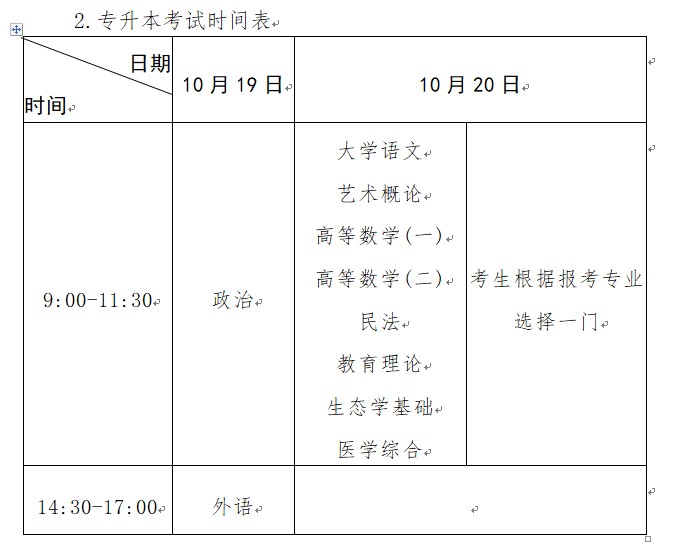限制性与非限制性定语从句四大区别
- 校园网
- 2024-04-21 13:03:20
- 56

限制性定语从句和非限制性定语从句有四大区别,现作简要介绍。
一、在句中作用不同
限制性定语从句对被修饰的先行词有限定制约作用,使该词的含义更具体,更明确。限制性定语从句不能被省略,否则句意就不完整。
非限制性定语从句与先行词关系不十分密切,只是对其作一些附加说明,不起限定制约作用。如果将非限制性定语从句省去,主句的意义仍然完整。
二、外在表现形式不同
限制性定语从句因与先行词关系密切,所以不可以用逗号将其与主句隔开;而非限制性定语从句与先行词关系不十分密切,所以可用逗号将其与主句隔开。
例 1. Do you remember the girl who taught us English?
你还记得教我们英语的那个女孩吗?
例 2. Clock is a kind of instrument which can tell people time.
钟是一种能够告诉人们时间的仪器。
例 3. This is the place where he used to live.
这就是他过去居住的地方。
例 4. Mr. Zhang, who came to see me yesterday, is an old friend of mine.
张先生昨天来看我,他是我的一位朋友。
例 5. We walked down the village street, where they were having market day.
我们沿着村里的大街向前走去,村民们正在那里赶集。
析:在前三个例句中,定语从句与先行词关系密切,为限制性定语从句,不可用逗号将其与主句隔开。在后两个例句中,定语从句与先行词关系不密切,为非限制性定语从句,可用逗号将其与主句隔开。
三、先行词内容有所不同
大多数限制性和非限制性定语从句的先行词往往为某一个词或短语,而特殊情况下非限制性定语从句的先行词也可为整个主句,此时非限制性定语从句常由 which 引导。
例 1. A middle-aged woman killed her husband, which frightened me very much.
一个中年女子杀害了自己的丈夫,这令我十分恐惧。
析:由语境可知,令“我”恐惧的内容应为“中年女子杀害了自己的丈夫”这整个一件事,因此先行词为整个主句,此时应由 which 引导定语从句。
例 2. A five-year-old boy can speak two foreign languages, which surprises all the people present.
一个五岁男孩会讲两门外语,这令所有在场的人感到非常惊讶。
析:由语境可知,令所有在场的人感到惊讶的内容是“一个五岁男孩会讲两门外语”这整个一件事,因此先行词为整个主句,此时应由 which 引导非限制性定语从句。
四、关系词的使用情况有所不同
(一) that 不可用于引导非限制性定语从句
所有关系代词和关系副词均可引导限制性定语从句,大多数关系代词和关系副词可引导非限制性定语从句,但 that 不可。
例 1. 他送给他母亲一台彩电作为生日礼物,这使她非常高兴。
误: He gave his mother a color TV set for her birthday, that pleased her a lot.
正: He gave his mother a color TV set for her birthday, which pleased her a lot.
例 2. 他没通过这次考试,令我很失望。
误: He didn't pass the exam, that disappointed me.
正: He didn't pass the exam, which disappointed me.
值得注意的是,不少同学误认为只有 which 才能引导非限制性定语从句,这个观点是不正确的。使用非限制性定语从句时,如果先行词指人,则用 who , which 或 whose 引导非限制性定语从句;先行词指物可用 which 引导非限制性定语从句;先行词表时间或地点且在从句中作时间状语或地点状语时,可用 when , where 引导非限制性定语从句。
例 1. We'll graduate in July, when we will be free.
我们将于七月份毕业,到那时我们就自由了。
例 2. Last Sunday they reached Nanjing, where a conference was to be held.
他们上周日到达南京,有个会议要在那里举行。
(二)关系代词替代情况不同
关系代词 whom 在限制性定语从句中作宾语时可用 who 代替 whom ,但 whom 在非限制性定语从句中作宾语时不可用 who 来代替。
例 1. This is the girl whom I met in the street.
这是我在街上遇到的那个女孩。
析:先行词 the girl 在限制性定语从句中作宾语,可用 who 代替 whom .
例 2. A young man had a new girl friend, whom he wanted to impress.
一个年轻的小伙子新交了一个女朋友,他想给她留下深刻的印象。
析:先行词 a new girl friend 在非限制性定语从句中作宾语,不可用 who 代替 whom .
在限制性定语从句中,先行词指人时可用 that 代替 who/ whom ,但在非限制性定语从句中先行词指人时,不可用 that 代替 who/whom .
限制性与非限制性定语从句四区别
2007-08-17 09:02:28
来源:转载查看:38199 例:她有一个姐姐,她是教师。
误: She has a sister, that is a teacher.
正: She has a sister, who is teacher.
(三)关系代词省略情况不同
关系代词在限制性定语从句中作宾语时可以省去,非限制性定语从句的所有关系词均不可省。
例 1. This is the book (which/that) he lost yesterday.
这就是他昨天丢的那本书。
析:先行词 the book 在限制性定语从句中作宾语,关系代词 which 或 that 可以省略。
例 2. The book, which he lost yesterday, has been found.
他昨天丢了这本书,但现在已找到了。
析:先行词 the book 在非限制性定语从句中作宾语,关系代词 which 不可省。
[实战演练]
1. She heard a terrible noise, _________ brought her heart into her mouth.
A. it B. which C. this D. that
2. Have you ever been to Xi'an, _________ I left ten years ago.
A. which B. whose C. that D. /
3. The weather turned out to be very good, _________ was more than we could expect.
A. what B. which C. that D. it
4. His English, ________ used to be very poor is now excellent.
A. which B. that C. it D . whom
5. Some of the roads were flooded, __________ makes o
ur journey more difficult.
A. that B. it C. which D. who
6. I'll find a nice girl, _________ I want to marry.
A. who B. whom C. that D. which
7. I'll come at ten, ________ I'll be free.
A. which B. that C. when D. what
8. She has two brothers, _________ are teachers.
A. who B. that C. whom D. /
9. Which answer is NOT true?
This is the factory ________ I visited yesterday.
A. that B. which C. / D. where
10. I still remember the days _________ I spent in Beijing.
A. when B. what C. that D. during
Key:
1. B 2. A 3. B 4. A 5. C
6. B 7. C 8. A 9. D 10. C
本站内容来源于网络,并不代表本站立场!版权归原作者所有,转发请注明来源,文章内容仅供参考。
校园网--www.xiaoyuan.org 联系邮箱:service@xiaoyuan.org
本文链接: http://www.xiaoyuan.org/blog/24344.html
 校园网
校园网























